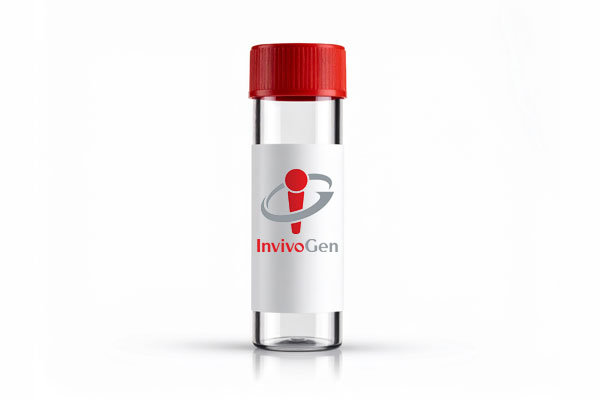EndotoxDetect™ was formerly known as HEK-Blue™ LPS Detection Kit 2, Components of the EndotoxDetect™ kit can be purchased separately
ABOUT
Cell-based colorimetric assay for endotoxin detection
EndotoxDetect™, formerly known as HEK-Blue™ LPS Detection Kit 2, is the first cellular assay for the visual, colorimetric detection of endotoxin in virtually all biological samples, including vaccine adjuvants and inhibitors of the LAL test.
Description
Endotoxins, also known as lipopolysaccharides (LPS) or lipoglycans, are a major cell wall component of Gram-negative bacteria. Endotoxins are potent inducers of inflammatory responses both in vitro and in vivo. They can alter cellular morphology, proliferation, and cytokine production as well as induce fever, multiple organ failure, and fatal septic shock. Endotoxin contaminations are a major concern for cell cultures and the production of injectable drugs. Monitoring for the presence of endotoxins in cell culture reagents, such as trypsin, water, or buffers is crucial.
Thus, InvivoGen introduces EndotoxDetect™, a cell-based, reliable, and sustainable tool to detect biologically active LPS. It features three major components:
- the endotoxin sensor cells, HEK-Blue™-4 cells,
- HEK-Blue™ Endotoxin Standard, and
- QUANTI-Blue™, a SEAP detection reagent.
Assay principle
HEK-Blue™-4 cells, engineered to become extremely sensitive to LPS, recognize even small amounts of endotoxin (>0.03 ng/ml or 0.01 EU/ml) through the Toll-like receptor (TLR) 4. This leads to the activation of NF-κB and the subsequent release of SEAP, a secreted embryonic alkaline phosphatase reporter protein, in the supernatant. Using QUANTI-Blue™, a SEAP detection reagent that produces a purple/blue color, NF-κB activation can be observed with the naked eye or measured at 620-655 nm. Optional, the concentration of endotoxin can be calculated from a standard curve obtained using serial dilutions of the HEK-Blue™ Endotoxin Standard, a preparation of E. coli 055:B5 LPS standardized against FDA-approved control standard endotoxin (CSE).
Key features
- Simple - Requires basic cell culture knowledge and no specific lab equipment
- Versatile - Measure endotoxin level in virtually all biological reagents
- Highly sensitive - Detect as little as 0.01 EU/ml
- Economical - 1 kit allows to perform up to 500 tests
Note: EndotoxDetect™ was formerly known as HEK-Blue™ LPS Detection Kit 2
References:
- Zhang G. and S. Ghosh, 2000. Molecular mechanisms of NF-kappaB activation induced by bacterial lipopolysaccharide through Toll-like receptors. J Endotoxin Res. 6(6): p. 453-7.
- Beutler B., 2003. Science review: key inflammatory and stress pathways in critical illness - the central role of the Toll-like receptors. Crit Care. 7(1): p. 39-46.
- Dobrovolskaia M.A. and S.N. Vogel, 2002. Toll receptors, CD14, and macrophage activation and deactivation by LPS. Microbes Infect. 4(9): p. 903-14.
- Wolk K. et al., 2000.Impaired antigen presentation by human monocytes during endotoxin tolerance. Blood. 96(1): p. 218-23.
- Kariko K. et al., 2004. Small interfering RNAs mediate sequence-independent gene suppression and induce immune activation by signaling through toll-like receptor 3. J Immunol. 172(11):6545-9.
- Darveau RP et al., 2004. Porphyromonas gingivalis lipopolysaccharide contains multiple lipid A species that functionally interact with both toll-like receptors 2 and 4. Infect Immun. 72(9):5041-51.
All products are for research use only, and not for human or veterinary use.
SPECIFICATIONS
Specifications
20µl
Detect as little as 0.01 EU/ml
Each lot is functionally tested and validated.
CONTENTS
Contents
-
Product:EndotoxDetect™
-
Cat code:rep-lps2
-
Quantity:1 kit
- 1 vial of HEK-Blue™-4 cells (3-7x 10^6 cells)
- 8 tubes of 250X HEK-Blue™ Selection (1 ml)
- 4 tubes of 500X Normocin™ (1 ml)
- 1 ml of QB reagent and 1 ml of QB buffer
- 2 tubes of HEK-Blue™ Endotoxin Standard (50 EU each)
- 2 bottles of HEK-Blue™ endotoxin-free water (60 ml)
Shipping & Storage
- Shipping method: Dry ice
- -20°C
- Avoid repeated freeze-thaw cycles
Storage:
Caution:
Details
Kit description
HEK-Blue™-4 Cells
HEK-Blue™-4 cells, the endotoxin sensor cells, are engineered HEK293 cells. These cells stably express TLR4 and multiple genes from the TLR4 pathway. Additionally, they coexpress an NF-κB-inducible secreted embryonic alkaline phosphatase (SEAP) reporter gene.
HEK-Blue™ Endotoxin Standard
HEK-Blue™ Endotoxin Standard is a preparation of E. coli 055:B5 LPS standardized against FDA-approved control standard endotoxin (CSE).
QUANTI-Blue™
QUANTI-Blue™ is a reagent specifically designed for the detection of SEAP. It contains a color substrate that produces a purple/blue color following its hydrolysis by SEAP. QUANTI-Blue™ is a liquid solution provided in an easy-to-use format. It has been optimized for use in 96-well plates and allows the preparation of 100 ml of detection reagent.
HEK-Blue™ Selection & Normocin™
HEK-Blue™ Selection is a solution that combines several selective antibiotics. These antibiotics guarantee the persistent expression of the various transgenes introduced in HEK-Blue™-4 cells. Further, Normocin™ is included in the kit to protect HEK-Blue™-4 cells from any potential microbial contamination, whether caused by mycoplasma, bacteria, or fungi.
DOCUMENTS
Documents
Technical Data Sheet
Safety Data Sheet
Certificate of analysis
Need a CoA ?




